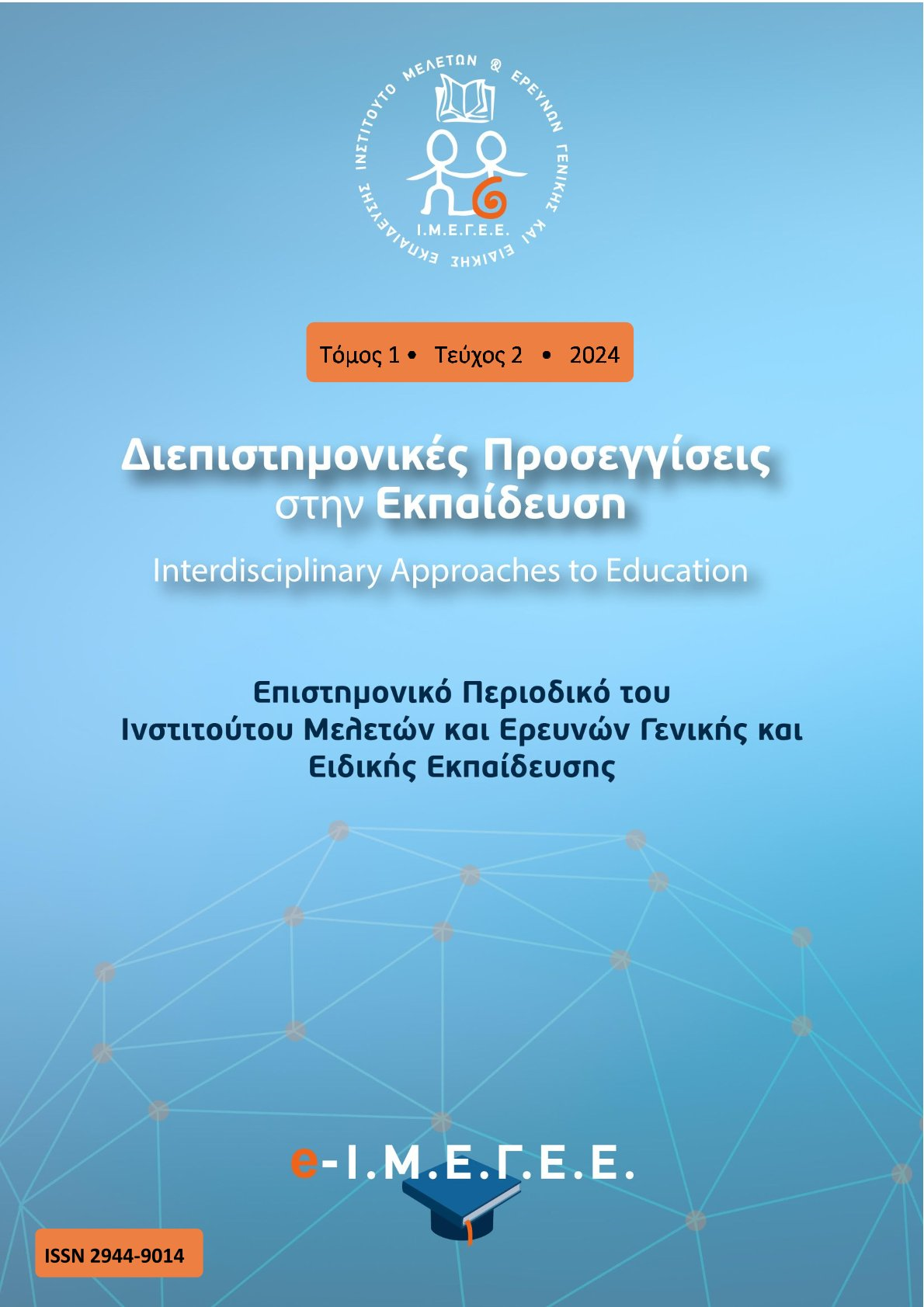Αντιμετώπιση και διαχείριση παιδιών με οπτική αναπηρία στο σχολείο και το σπίτι
Περίληψη
Η παρούσα εργασία πραγματεύεται την αντιμετώπιση και διαχείριση παιδιών με οπτική αναπηρία στο σχολείο και το σπίτι, επικεντρώνοντας στην ανάγκη για προσαρμοσμένες στρατηγικές που ενισχύουν την εκπαίδευση, την ανάπτυξη και την καθημερινή ζωή των παιδιών αυτών. Τονίζεται η σημασία της κατανόησης των διάφορων μορφών οπτικής αναπηρίας για την ανάπτυξη ενός ανοιχτού και προσβάσιμου εκπαιδευτικού περιβάλλοντος, όπως επίσης εξετάζονται οι δυσκολίες που αντιμετωπίζουν τα παιδιά με οπτική αναπηρία και οι επιπτώσεις αυτών στη μάθηση, τις κοινωνικές αλληλεπιδράσεις και την ανεξαρτησία. Επισημαίνεται η ανάγκη για δημιουργία ενός σχολικού περιβάλλοντος χωρίς αποκλεισμούς, όπου οι εκπαιδευτικοί υιοθετούν προσαρμοσμένες μεθόδους διδασκαλίας, αξιοποιώντας τεχνολογίες για να καταστήσουν τη μάθηση προσιτή, ενισχύοντας παράλληλα και την κοινωνική ένταξη των μαθητών. Συζητείται η σημασία των τεχνολογικών βοηθημάτων και εργαλείων που επιτρέπουν στους μαθητές με προβλήματα όρασης να έχουν πρόσβαση στην εκπαίδευση και να είναι ανεξάρτητοι. Τέλος, αναδεικνύεται η ανάγκη προσαρμογών στα προγράμματα σπουδών και τη διδασκαλία, ώστε να ανταποκρίνονται στο μαθησιακό στυλ και στις ανάγκες των μαθητών. Προτείνεται η υποστήριξη της μετάβασης και της ανεξαρτησίας μέσω σχεδιασμού και στρατηγικών που ενθαρρύνουν την αυτονομία και τη συνεργασία σχολείου-οικογένειας. Τονίζεται επίσης ο ρόλος των οικογενειών στη δημιουργία ενός υποστηρικτικού περιβάλλοντος για τα παιδιά με προβλήματα όρασης, παρέχοντας ενθάρρυνση και συναισθηματική υποστήριξη.
Λεπτομέρειες άρθρου
- Πώς να δημιουργήσετε Αναφορές
-
Πάσχου Α., & Μαστροθανάσης Κ. (2024). Αντιμετώπιση και διαχείριση παιδιών με οπτική αναπηρία στο σχολείο και το σπίτι. Διεπιστημονικές Προσεγγίσεις στην Εκπαίδευση, 1(2). https://doi.org/10.12681/.36621
- Ενότητα
- Articles
Ενημέρωση για τα πνευματικά δικαιώματα
Οι συγγραφείς των άρθρων που δημοσιεύονται στο περιοδικό διατηρούν τα δικαιώματα πνευματικής ιδιοκτησίας επί των άρθρων τους, δίνοντας στο περιοδικό το δικαίωμα της πρώτης δημοσίευσης. Άρθρα που δημοσιεύονται στο περιοδικό διατίθενται με άδεια Creative Commons 4.0 και σύμφωνα με την άδεια μπορούν να χρησιμοποιούνται ελεύθερα, με αναφορά στο/στη συγγραφέα και στην πρώτη δημοσίευση για μη κερδοσκοπικούς σκοπούς και με δικαίωμα τροποποίησης μόνον με παρόμοια διανομή (αν αναμείξετε, τροποποιήσετε, ή δημιουργήσετε πάνω στο υλικό, πρέπει να διανείμετε τις δικές σας συνεισφορές υπό την ίδια άδεια όπως και το πρωτότυπο).
Απαγορεύεται η αντιγραφή, αποθήκευση και διανομή της παρούσας εργασίας, εξ’ολοκλήρου ή τμήματος αυτής, για εμπορικό σκοπό. Επιτρέπεται η ανατύπωση, αποθήκευση και διανομή για σκοπό µη κερδοσκοπικό, εκπαιδευτικής ή ερευνητικής φύσης, υπό την προϋπόθεση να αναφέρεται η πηγή προέλευσης και να διατηρείται το παρόν µήνυµα. Ερωτήματα που αφορούν τη χρήση της εργασίας για κερδοσκοπικό σκοπό πρέπει να απευθύνονται προς τους συγγραφεα-είς. Οι απόψεις και τα συμπεράσματα που περιέχονται σε αυτό το έγγραφο εκφράζουν το-ους συγγραφέα-είς και δεν πρέπει να ερμηνευθεί ότι αντιπροσωπεύουν τις επίσηµες θέσεις του Ινστιτούτου Μελετών και Eρευνών Γενικής και Ειδικής Εκπαίδευσης (Ι.Μ.Ε.Γ.Ε.Ε.).
Copyright notice
Authors retain copyright and grant the journal right of first publication with the work simultaneously licensed under a Creative Commons Attribution NonCommercial License that allows others to share the work with an acknowledgement of the work's authorship and initial publication in this journal.



